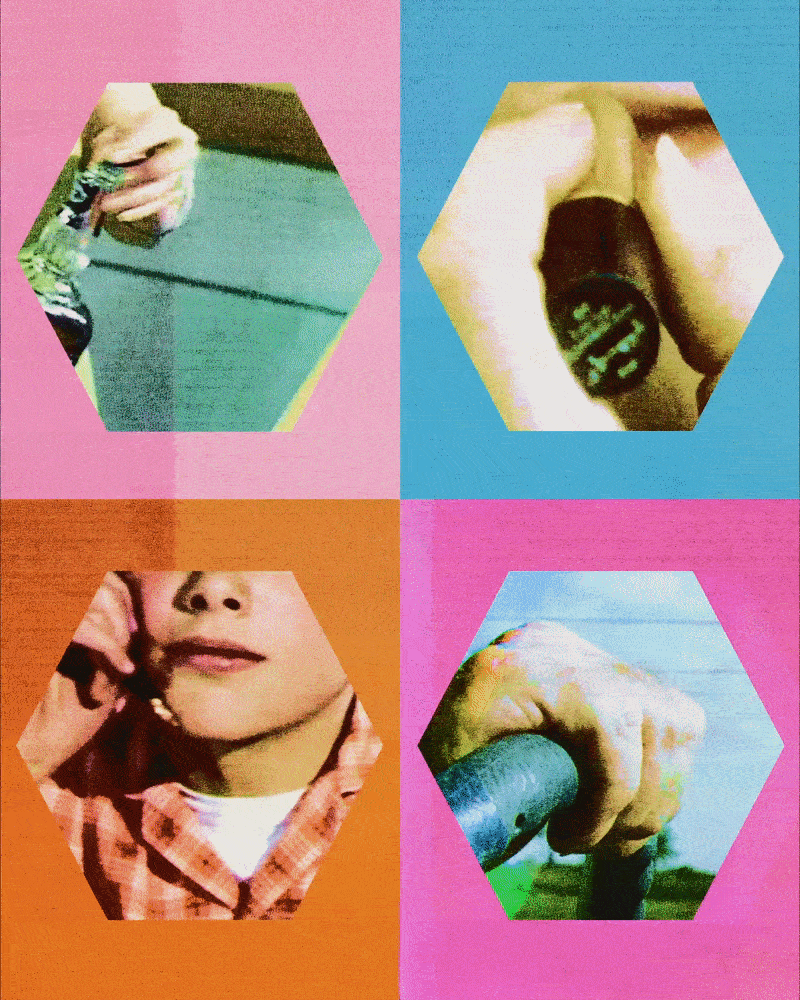

In “The Bee Sting,” the fourth novel by the Irish author Paul Murray, twelve-year-old PJ Barnes ponders the downsides of resurrection. He recently saw “Pet Sematary,” Stephen King’s horror film about a graveyard that disgorges its occupants and sends them back into the world. “When things come back,” PJ observes, “very often they come back different.” The rule applies to his own father, Dickie Barnes, who has been working long hours on a building project in the woods; business at his auto dealership hasn’t been the same since the 2008 market crash. Dickie returns to the house periodically, but he’s almost unrecognizable, snappish one moment and catatonic the next. A friendly conversation with a local garda leaves him “death-white,” his eyes “wide as plates,” and emitting a noise like “a horrible croaking, or a reverse-croaking,” as if “he’s trying to suck in breath but he can’t.”
The novel is about things coming back different, coming back weird. Its more than six hundred pages explore the eeriness of transformative change, and they are packed with literal and symbolic deaths. The first lines dispatch a handful of incidental characters: “In the next town over, a man had killed his family . . . When he had finished he turned the gun on himself.” Murray handles his protagonists with comparable ruthlessness, introducing them only to rip their identities and projected futures out from under them. The book employs a rotating structure: the four members of the Barnes family—PJ and his dad are joined by PJ’s mother, Imelda, and his sister Cass—take turns as narrator. Some of their metamorphoses are comic (the “clammy illicit flowerings” of puberty) and some are tragic (the downward slope of adult life) but what binds them together is a neck-prickling sense of defamiliarization. As with his celebrated second novel, “Skippy Dies,” Murray intertwines registers from the lyre-strumming to the fart-ripping. (“Skippy Dies” was long-listed for the Booker Prize in 2010. “The Bee Sting” is long-listed for this year’s Booker.) In “Skippy,” Murray recounts a semester at a boy’s boarding school in Dublin from a round of perspectives. At one point, a group of fourteen-year-olds try to communicate with their departed friend. “And even though it didn’t work,” one of them reflects, “it did sort of work . . . because each of us has his own little jigsaw piece of him he remembers, and when you fit them all together, and you make the whole picture, then it’s like he comes to life.”
The line rhymes with “The Bee Sting” ’s theme of uncanny returns. It also foreshadows the new book’s use of revolving viewpoints to reconstruct the past. Although Murray’s swivelling P.O.V. framework evokes family novels by Jonathan Franzen and Maile Meloy, the best comparison may be to William Faulkner, whose experimental language helped differentiate between the voices of the Compson siblings in “The Sound and the Fury,” and who also had a heightened sense of the eeriness of transformative change. Murray shows off his formidable range, immersing us in worlds so distinct and textured that they seem to blot one another out—subjectivity and how its wonderful thickness can lead people astray being one of this author’s preoccupations. Early chapters are propelled by a sustained sense of revelation. As the details pile up, irony, both caustic and elegiac, flourishes in the knowledge gaps between characters. The contrapuntal format allows Murray to dramatize misunderstandings among the Barneses. Again and again, details “come back different,” reframed or reanimated by another perspective, and their repetition adds to the sense of spookiness, as if the book itself were haunted.
Murray hands over the first section to Cass, a bookish, age-appropriately surly teen-ager in her last year of secondary school. Cass is a daddy’s girl who doesn’t know how to forgive evidence of his imperfections. She hates her mother, a local beauty, whom she sees as shallow and petty, as fiercely as she loves her mercurial friend Elaine—“golden hair, green eyes, a perfect figure.” “Even when she was clipping her toenails,” Cass thinks, “she looked like she was eating a peach.” Despite her terminal case of adolescence, Cass is presented neither as a generic teen nor as a source of comic relief. Rather, the book honors her intelligence, her reserves of poetic feeling. The infatuation with Elaine evolves into something more serious and forbidden, “like a moon,” Murray writes, “hidden in the brightness of the daytime sky, whose private gravity she could feel pulling her away from the earth.”
PJ is tender, with ungrounded fears of being sent away to boarding school; when the Barnes’s car dealership starts to fail, he bloodies his feet in too-small sneakers rather than admit to his parents that he needs a new pair. This turns out to be one of the less consequential secrets that he is keeping from his family. He also hasn’t volunteered that a schoolmate has threatened to live-stream beating him with a hammer unless PJ can come up with a hundred and sixty-three euros. (The schoolmate believes that the high-and-mighty Barneses cheated his mother at their garage.) Likewise, PJ hasn’t mentioned his heartfelt correspondence with Ethan, a kid he met in an online-gaming forum. Ethan thinks PJ should come visit him in Dublin, where he has a puppy and a spare room with a skylight and lives close to the zoo. PJ is seriously tempted.
It’s hard to resist Murray in his schoolyard mode, wittily choreographing nerds and bullies. As in “Skippy Dies,” he catches the electrifying friendships, confusing mating rituals, and righteous disgust at adult hypocrisy that mark one’s teen-age years. An early pleasure of “The Bee Sting” is its attention to such phenomena of adolescent and preadolescent life as the ominously meandering lecture: “Dad liked to bring you on a little journey first, up over the hills and mountains,” Cass thinks, “ . . . you just had to follow the path he had laid out, his voice calm and even, your guilt crushing down on your shoulders, until turning a corner you would find yourself at the summit, your crime lying spread out in a panorama before you, and you and he would gaze down on it together.” To a kid, a parent’s vantage can be indistinguishable from God’s.
But when the perspectival carrousel brings around Imelda and then Dickie, “The Bee Sting” becomes a richer and deeper project. The adult chapters are less cute; they are thornier, more treacherous, and formally more ambitious, using stream of consciousness to invoke the shattering power of grief and lust. In Cass’s section, Imelda comes off as inane and superficial: “To spend time with her mother was to get a running commentary on the contents of her mind—an incessant barrage of thoughts and sub-thoughts and random observations.” Imelda’s chapter recuperates not just the woman, who is revealed to be one of the book’s most interesting characters, but also her way of speaking, which, contrary to what Cass thinks, is percussive, galloping, entranced, and furious, like that of a modernist Guinevere. (“She smiles her brightest smile over and over a lighthouse blinking into the indifferent ocean Wondering are they ever going to sit down when who slooches up to her except Big Mike Comerford Well says he Well Mike she says back as politely as she can.”) Imelda’s passages flicker with accents from Irish lore: spectral black dogs, fortunes gathered from the bottom of a teacup. Her life itself feels wand-struck, alternately charmed and cursed. She grew up in poverty. Her father was a gangster, a bruiser, and a drunk; she learned to sew by stitching up her brothers after he’d beaten them. Yet she also possesses an almost supernatural beauty, a protective glamor that appears to cancel out her violent family and her “accent that could strip paint.”
Early in the book, we learn that Imelda is notorious for having refused to take off her veil during her wedding—the reason, it is said, being that she was stung on her face by a bee on the way to the ceremony. Cass takes the tale as evidence of her mother’s vanity, but Murray shows the real story of the wedding to be much stranger and sadder: as a teen-ager, Imelda fell in love with Frank Barnes, the handsome star of the football team and the son of the town’s wealthiest man. They got engaged, but then her prince died in a car accident; Imelda, increasingly unmoored, agreed to marry his brother Dickie, believing that Frank’s ghost would appear to her on her wedding day. As the book goes on, Imelda and Dickie’s nuptials emerge as a landmark event. The townspeople have their own nostalgic or dismayed memories of what takes place, but Imelda’s account has a particular Gothic power. Throughout the ceremony and toasts, she waits for a flash from the back of the room: “Fleeting white faceless Drawing closer Coming straight towards her through the dark.” But the apparition, when it arrives—“A shimmering bright haze As it rose from the guests At last she thought”—is only her veiled reflection in the mirror. Imelda understands, then, that she is the ghost: “a leftover from another life A remnant of something that was no more.”
“The Bee Sting,” a Family Saga of Desperation and Denial
Source: News Flash Trending



0 Comments